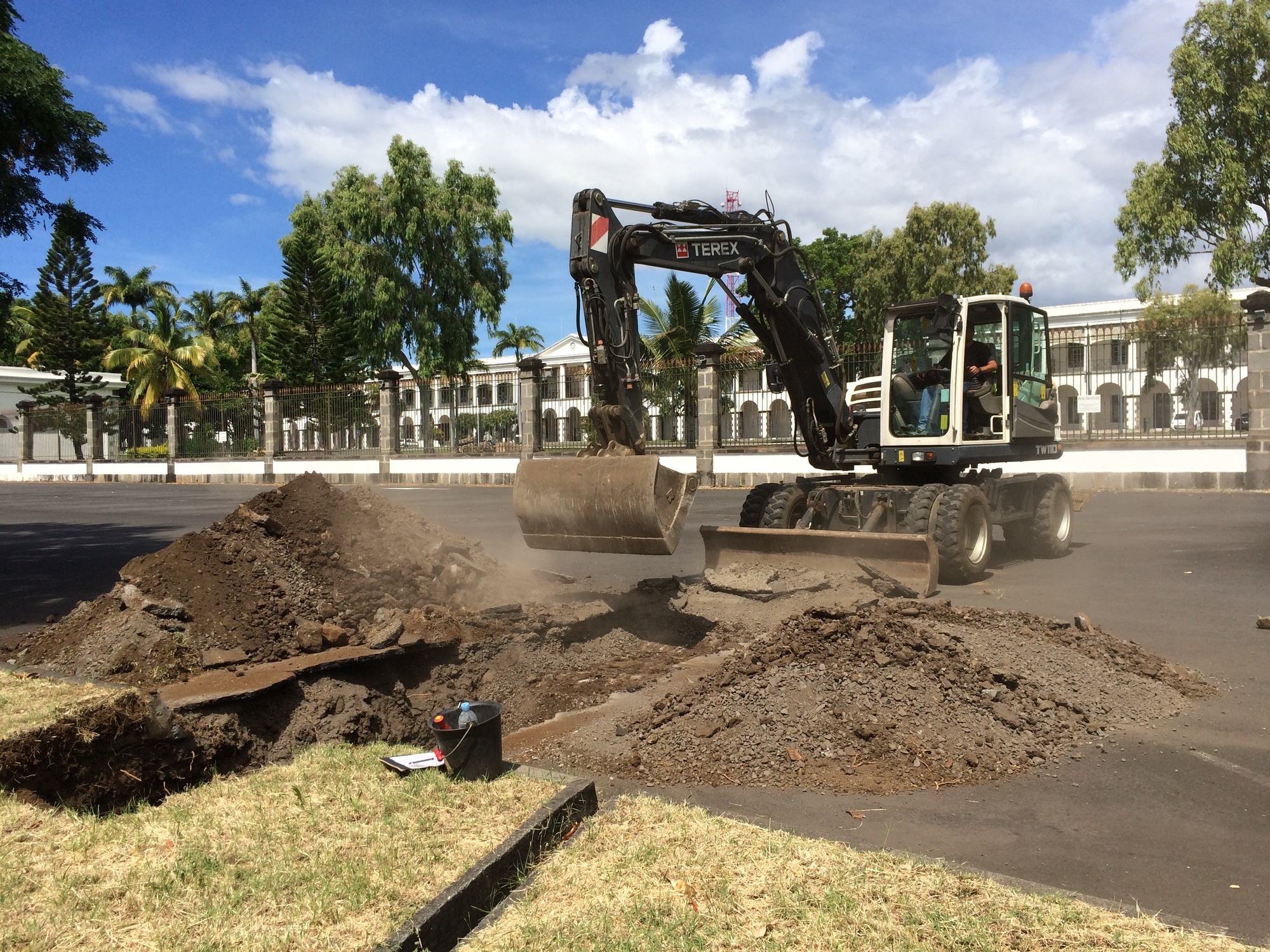
- Home
- Archaeology on Reunion Island
- Sites
- Saint-Denis
- Caserne Lambert
- Cilaos
- La Possession
- Saint-André
- Saint-Benoît
-
Saint-Denis
- 119 rue Jean Chatel
- Cells in the Saint-Bernard leprosaria
- Caserne Lambert
- Railway station
- La Grande Chaloupe station
- Îlet à Guillaume
- Lazarets de la Grande Chaloupe
- Schneider et Cie steam locomotive
- Marine du Butor
- New Western Entrance
- La Providence
- Place du Général de Gaulle
- Port du Barachois
- Juliette Dodu Prison
- Quadrilatère océan
- The "Redoute Bourbon"
- Rue de la Batterie
- Saint-Joseph
- Saint-Leu
- Saint-Louis
- Saint-Paul
- Saint-Pierre
- Saint-Philippe
- Sainte-Rose
- Sainte-Suzanne
- Salazie
An archaeological evaluation was performed in 2017 on a 21,350 sq.m. site prior to construction work to secure the Lambert barracks. Archaeologists expected to find remains dating from before the construction of the barracks in this district, which had a strong military presence from 1846.
A lazaretto building
A lazaretto was marked on the Chandellier map dating from 1808, between the Saint-Denis River and the "Camp des Noirs de l’État" district. This complex had a central passage, four elongated buildings and three smaller ones where infected passengers disembarking at marines were detained on a site measuring 140 by 110 metres.
A test pit revealed a building with rubble stone walls joined with earth belonging to two internal areas with clay-tiled floors. Empty spaces between the wall facings and floors suggest it was partly constructed using perishable materials. By comparing the site with the 1808 map, it was possible to match up this building with one of the small lazarreto buildings.
Other remains
The 27 test pits opened on the excavation site revealed different types of construction related to the barrack site. Archaeologists uncovered a cistern 2.55 metres long and 1 metre deep along with "galetage" or pebble cobbling forming a section of road dating from the military occupation of the site before the construction of the Lambert barracks. They also recorded two railway works: the bridge over the Caserne gully and a scupper bordered by two robust masonry works.




